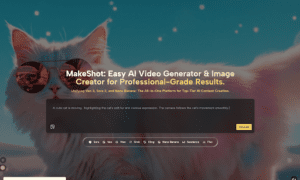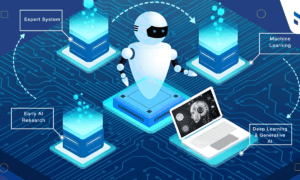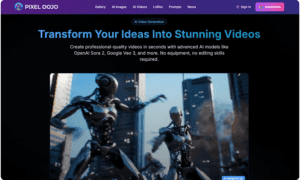Generative AI content creation is revolutionizing the way businesses, creators, and marketers produce content. By leveraging advanced algorithms, generative AI tools like ChatGPT, DALL·E, and Jasper can create text, images, videos, and more with remarkable speed and accuracy. This technology is transforming industries by automating content production, reducing costs, and enabling highly personalized outputs tailored to specific audiences.
How Generative AI Works
Generative AI relies on large language models (LLMs) and machine learning techniques to produce human-like content. These models are trained on vast datasets, allowing them to understand context, grammar, and visual patterns. For example, a text-based AI can generate blog posts, social media captions, or marketing copy, while image-based AI can create artwork or product visuals. The ability to generate content from simple prompts makes these tools accessible to non-experts.
The process typically involves inputting a prompt—such as a topic or description—and letting the AI generate a response. Users can refine outputs by adjusting parameters, ensuring the content aligns with their brand voice or creative vision. This flexibility makes generative AI a game-changer for content creators.
Applications Across Industries
Generative AI content creation has applications across various sectors. In marketing, businesses use AI to craft compelling ad copy, email campaigns, and social media posts, saving time and resources. E-commerce companies leverage AI to generate product descriptions or create virtual product images. In the entertainment industry, AI is used to write scripts, compose music, or design video game assets.
Education is another area where generative AI shines. It can create personalized learning materials, quizzes, or study guides tailored to students’ needs. Similarly, in journalism, AI can assist with drafting articles or summarizing complex reports, allowing journalists to focus on in-depth analysis.
Benefits of Generative AI Content Creation
The primary benefit of generative AI is efficiency. Tasks that once took hours, like writing a blog post or designing a graphic, can now be completed in minutes. This allows businesses to scale content production without hiring additional staff. Additionally, AI can produce content in multiple languages, making it easier to reach global audiences.
Another advantage is personalization. AI can analyze user data to create content that resonates with specific demographics, improving engagement and conversion rates. For example, an AI-powered email campaign can tailor subject lines and content to individual preferences, boosting open rates.
Challenges and Ethical Considerations
Despite its benefits, generative AI content creation raises challenges. One concern is the potential for AI to produce biased or inaccurate content, as it relies on the data it was trained on. Creators must review outputs to ensure accuracy and alignment with their values. Additionally, there’s the risk of over-reliance on AI, which could stifle human creativity or lead to generic content.
Ethical considerations also come into play. AI-generated content can blur the line between human and machine authorship, raising questions about copyright and authenticity. Businesses must be transparent about using AI and ensure they comply with intellectual property laws.
Best Practices for Using Generative AI
To maximize the benefits of generative AI content creation, follow these best practices. First, use clear, specific prompts to guide the AI toward desired outcomes. For example, instead of asking for a “blog post,” request a “900-word blog post on sustainable fashion for millennials.” Second, always edit and fact-check AI-generated content to maintain quality and accuracy.
Third, combine AI with human creativity. Use AI to handle repetitive tasks, like drafting outlines or generating ideas, while reserving final edits and creative decisions for humans. Finally, stay updated on AI advancements, as new tools and features are constantly emerging.
The Future of AI in Content Creation
The future of generative AI content creation is bright, with advancements in multimodal AI that can produce text, images, and videos simultaneously. As AI becomes more sophisticated, we can expect even greater personalization and interactivity. For example, AI could create immersive virtual experiences or real-time content tailored to live events.
However, as AI adoption grows, so will the need for ethical guidelines and regulations. Balancing innovation with responsibility will be key to ensuring generative AI remains a force for good in content creation.
In summary, generative AI content creation is transforming how we produce and consume content. By embracing its potential while addressing its challenges, businesses and creators can unlock new opportunities for efficiency and creativity.



































